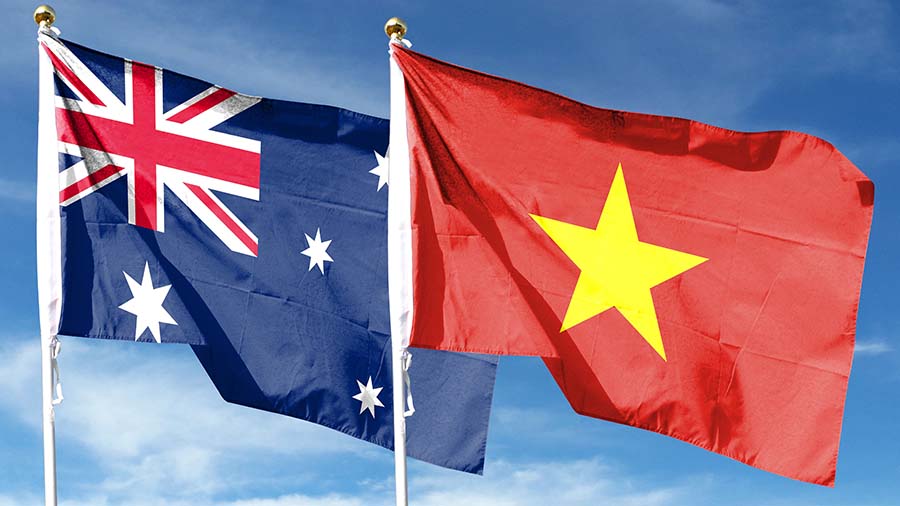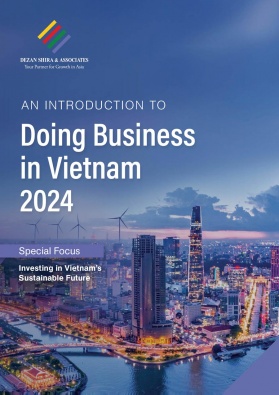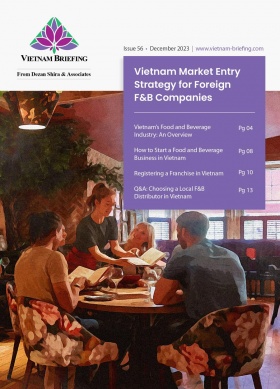Eco-Industrial Parks in Vietnam: Implementation and Key Goals
The Vietnam government is considering a policy to facilitate the development of large eco-industrial parks and update preferential policies to encourage green investments. We discuss the proposed policy recommendations, pilot projects, and key goals.
The Ministry of Planning and Investment (MPI) recently unveiled a proposal for a new law on industrial parks, aimed at fostering the development of large ecological industrial parks (EIPs) and attracting high-quality investments. This proposal includes incentive policies to support industrial park projects that align with Vietnam’s goals of industrialization, modernization, green infrastructure, digitization, and the circular economy.
The incentives are designed to promote highly specialized and smart industrial parks, encouraging investment in sectors such as the digital and green economies, chips, semiconductors, and innovative materials industries. The proposed law also suggests preferential policies related to taxes, fees, and capital investment in these zones, aiming to streamline administrative procedures.
Businesses are actively advocating for a comprehensive regulatory framework for EIPs to incentivize sustainable investment. Current complex and overlapping legal regulations and procedures have made investing in Vietnam’s industrial parks challenging, hindering sustainable development prospects. Specifically, the management of industrial parks is complicated by overlapping regulations and policies related to land, construction, and the environment.
The MPI expects the proposed law to serve as experimental measures to effectively address current challenges and promote the development of EIPs.
Overview of Vietnam’s industrial parks
In an article published on July 8, 2024, Nguyen Chi Dung, the Minister of Planning and Investment, reported that Vietnam has 425 industrial parks and manufacturing areas (MAs), occupying about 89,200 hectares of the country’s industrial land fund. Of these, 299 industrial parks and manufacturing areas are operational, attracting substantial investments and playing an important role in national and local economies.
An MPI report indicates that 416 industrial parks and over 1,000 industrial clusters currently contribute around 50 percent of Vietnam’s export turnover.
In recent years, foreign direct investment (FDI) has significantly fueled the growth of industrial parks and economic zones in Vietnam. The FDI inflow into these areas accounts for 35 to 40 percent of the nationally registered FDI. In the processing and manufacturing sectors, industrial parks have attracted 70 to 80 percent of the total registered FDI projects. These parks have become hotspots for major national and international projects by renowned enterprises such as Samsung, LG, Canon, Foxconn, Lego, Gortek, Hyosung, and more.
The MPI’s efforts in promoting eco-industrial parks
Despite their economic benefits, the expansion of industrial parks and increasing industrialized manufacturing in Vietnam create significant ecological risks and social challenges. Inadequacies persist in these parks’ services, social security, and industrial symbiosis between enterprises within an industrial park or between different parks.
Therefore, Vietnam is committed to transforming traditional industrial parks into green and eco-friendly zones that follow global sustainable development standards. With assistance from international experts and organizations, the Vietnamese government has successfully piloted several EIPs.
Pilot EIP projects between 2015 and 2019
During the 2015-2019 period, the MPI and the United Nations Industrial Development Organization (UNIDO) piloted several EIP initiatives in three provinces with funding from other international organizations. The three pilot EIP projects were at:
- Khanh Phu Industrial Park and Gian Khau Industrial Park in Ninh Binh;
- Hoa Khanh Industrial Park in Da Nang; and
- Tra Noc Industrial Park 1 and 2 in Can Tho.
According to Minister Dung, innovation in these pilot zones has helped 72 businesses save more than 22,000 MWh of electricity, 600,000 m3 of water, 140 terajoules (TJ) of fossil fuel, nearly 3,600 tonnes of chemicals and waste, and more than VND76 billion (US$2.99 million) each year.
The private sector has contributed over VND207 billion (US$10.62 million) to these eco-industrial parks, helping to reduce 32 kilotonnes of CO2 annually.
From 2020 to the present
With financial support from the Swiss government, the MPI continues to collaborate with UNIDO to replicate EIP models in Hai Phong, Dong Nai, and Ho Chi Minh City (HCMC). By the end of May 2024, this collaboration had assisted 90 businesses with 899 effective solutions for Resource-Efficient and Cleaner Production (RECP) in the industrial parks of Hiep Phuoc in HCMC, Amata in Dong Nai, Deep C (Dinh Vu) in Hai Phong, and Hoa Khanh in Da Nang.
The MPI proposes implementing 62 industrial symbiosis and industrial-urban symbiosis solutions for three industrial parks (Hiep Phuoc, Amata, and Deep C), with 18 highly feasible cases. This would contribute to optimizing waste reuse and concretizing the implementation of the circular economy.
The ministry has also consulted with the government on completing the legal framework to facilitate the development of the EIP model in Decree No. 35/2022/ND-CP, dated May 28, 2022, on managing industrial parks and economic zones. Decree No. 35/2022/ND-CP inherits and expands upon the regulations in Decree No. 82/2018/ND-CP, adding and completing regulations on:
- Support and cooperation policies for EIP development
- Determination criteria
- Incentives
- Orders, procedures, and registration documents for the Certification of EIPs and eco-enterprises
- Re-certification, termination, or revocation of the Certificate of EIPs and eco-enterprises
Future cooperation: From 2024 to 2028
Based on the positive results from the previous implementation of EIPs in Vietnam, the Swiss government has committed to extending its assistance to Vietnam, in collaboration with UNIDO, to boost EIP development and realize a circular economy from 2024 to 2028.
Additionally, the MPI has several cooperation frameworks with other organizations, including:
- Facilitating EIP construction in Binh Duong in coordination with the World Bank.
- Implementing water circulation networks for several textile-focused industrial parks in Hung Yen and Thua Thien Hue.
- Incentivizing efficient power usage to replicate South Korean models of EIPs.
- Furthering cooperation with the Delegation of the European Union (EU) and the Dutch Sustainable Trade Initiative (IDH) to support the transition to a circular economy for businesses in industrial parks.
Key points to consider when choosing industrial parks in Vietnam
Positive attributes
Foreign firms should consider several positive aspects when evaluating Vietnam’s industrial parks as their next investment destination. Key benefits include:
- Governmental efforts in EIP development: Ongoing efforts to develop eco-industrial parks make Vietnam attractive for sustainable investments.
- Proximity to transport systems: Industrial parks in Vietnam are strategically located near major roads, airports, ports, and train terminals, facilitating efficient logistics and transportation.
- Affordable labor costs: Vietnam is known for its low labor costs. Major cities like Hanoi and Hai Phong offer abundant labor forces, while HCMC and surrounding areas have numerous educational institutions producing skilled workers, especially in technical professions.
- Tax incentives: Vietnam offers various tax breaks depending on the industry and location, including exemptions or reductions in corporate income tax (CIT), value-added tax (VAT), and import taxes.
- Promoted sectors: The government promotes investment in trending industries, such as education, healthcare, sports, culture, high technology, environmental protection, scientific research, infrastructure development, and software manufacturing.
- Competitive lease prices: Despite mild increases in expenses, industrial zones in the North had competitive lease prices in the first half of 2021. Per a 2023 Savills report, Hanoi had the highest average lease price at US$129 per square meter, while Hai Duong had the lowest at USUS$79 per square meter. In the South, HCMC had the highest lease price at US$161 per square meter, while Ba Ria-Vung Tau was the lowest at US$94 per square meter, despite a significant 45 percent increase.
Specified criteria of industrial parks
Investors should also be aware of certain challenges when considering industrial parks in Vietnam:
- Varied rental fees: Rental fees can vary significantly by area. While the average rental fee in industrial zones typically ranges from US$2 to US$4 per square meter per month, rents in high-tech zones can be US$5 to US$6 per square meter per month or more.
- Land availability for small projects: Industrial parks are primarily designed for large, high-quality projects, with typical sizes ranging from 1,000 square meters to tens of thousands of square meters, making it challenging for firms seeking smaller plots.
- Industry focus of the zone: The government’s focus on green, high-tech, and eco-friendly industrial parks limits the industry portfolio for these zones. However, stringent standards, restrictions, and operational characteristics in these zones support fields like information technology, biotechnology, new materials technology, and automation technology, reducing risk and enhancing growth potential for firms in these sectors.
Overall, foreign firms may find Vietnam’s industrial parks advantageous due to the strategic efforts in sustainable development, competitive costs, skilled labor availability, and supportive tax policies. However, potential investors should carefully consider rental costs, land availability, and industry compatibility to make informed decisions.
Conclusion
Vietnam is transitioning towards greener eco-industrial park models. As further regulations are developed to facilitate EIP setups, businesses are encouraged to explore relevant opportunities in these zones, particularly if they are engaged in high-tech and futuristic sectors like information technology, biotechnology, new materials technology, and automation technology.
Specific criteria relating to the industrial portfolios or project sizes of undertakings in Vietnam’s industrial parks can reduce risk and accelerate growth potential for qualified businesses.
About Us
Vietnam Briefing is published by Asia Briefing, a subsidiary of Dezan Shira & Associates. We produce material for foreign investors throughout Asia, including ASEAN, China, and India. For editorial matters, contact us here and for a complimentary subscription to our products, please click here. For assistance with investments into Vietnam, please contact us at vietnam@dezshira.com or visit us at www.dezshira.com.
Dezan Shira & Associates assists foreign investors throughout Asia from offices across the world, including in Hanoi, Ho Chi Minh City, and Da Nang. We also maintain offices or have alliance partners assisting foreign investors in China, Hong Kong SAR, Dubai (UAE), Indonesia, Singapore, Philippines, Malaysia, Thailand, Bangladesh, Italy, Germany, the United States, and Australia.
- Previous Article How to Set Up a Representative Office in Vietnam
- Next Article Vietnam-South Korea Trade and Investment































